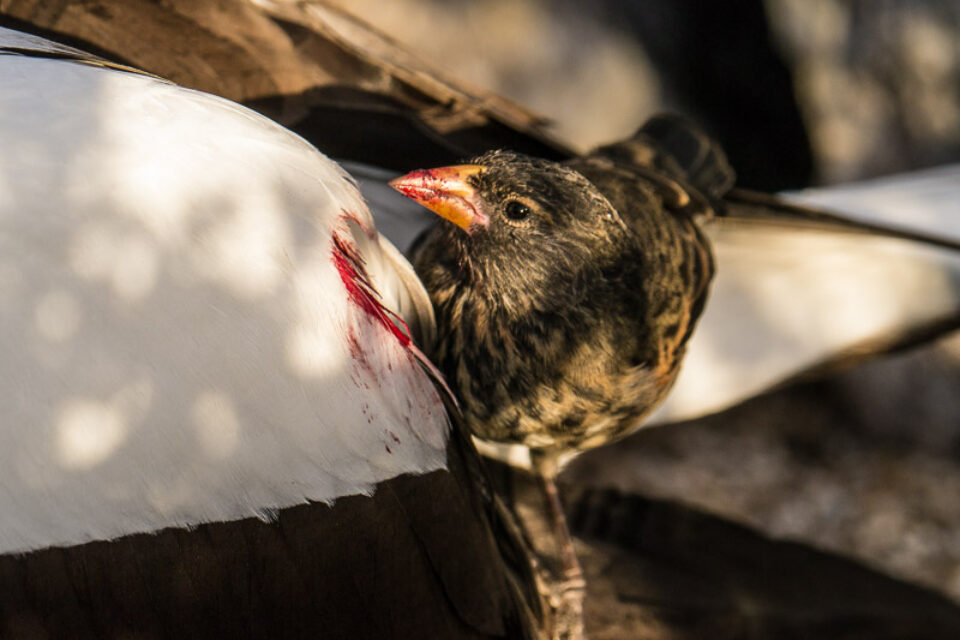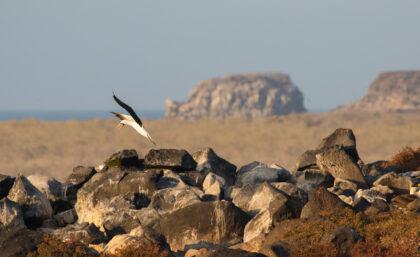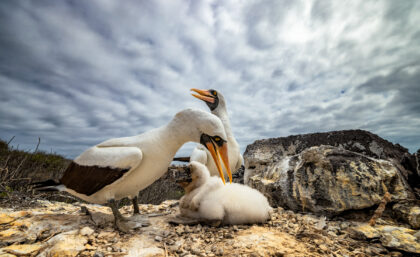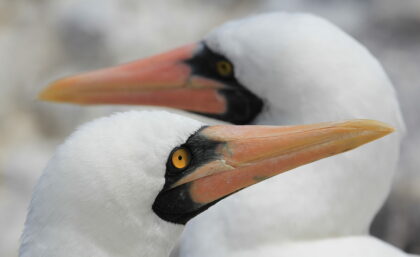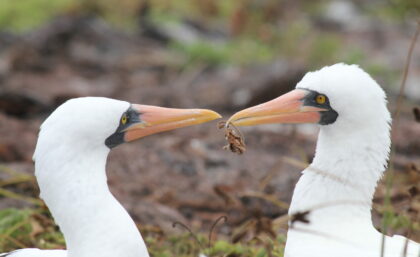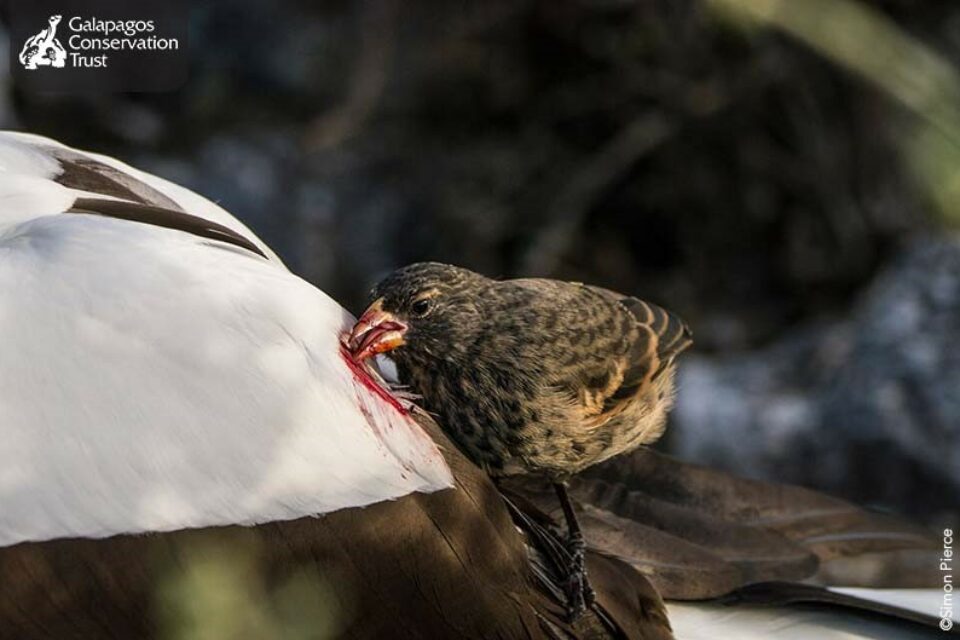
Common name:
Nazca booby
Scientific name:
Sula granti
Spanish name:
Piquero de Nazca
Conservation status:
Least Concern
Average lifespan:
23 years
Average size:
76 - 89 centimetres (Length) / 1.55 metres (Wingspan)
Maximum size:
92 centimetres (Length) / 1.8 metres (Wingspan)
Average weight:
1.3 - 2.3 kilograms
Maximum weight:
2.3 kilograms
Overview
Nazca boobies can be found along the Eastern Pacific coastline, in coastal regions of mainland South America and Central America, as well as in the Galapagos Archipelago and Mapelo island, Colombia, where they primarily breed. However, Nazca boobies can rarely be spotted offshore. They are one of three species of booby found in Galapagos and their name comes from the Spanish word ‘bobo’, meaning foolish or clown – referring to their clumsy movement on land.
Nazca boobies are white with black feathers on their tails. The males have yellow or orange beaks, while the female’s beak is far paler and has a more pinkish tone. However, their colours do slightly vary between different populations. Females are also slightly larger in size. Nazca boobies were differentiated from masked boobies due to the difference in their bill colour, their larger size and breeding range. Nazca boobies can be told apart from the red-footed and the blue-footed boobies due to the difference in the colour of their feet. Although the Nazca booby does not flaunt an iconic bold colour like the two other species of boobies, they can be differentiated due to their grey feet and their orange beaks. They are often confused with the red-footed booby and masked booby.
Nazca boobies in Galapagos
Photo gallery
Click an image to view larger
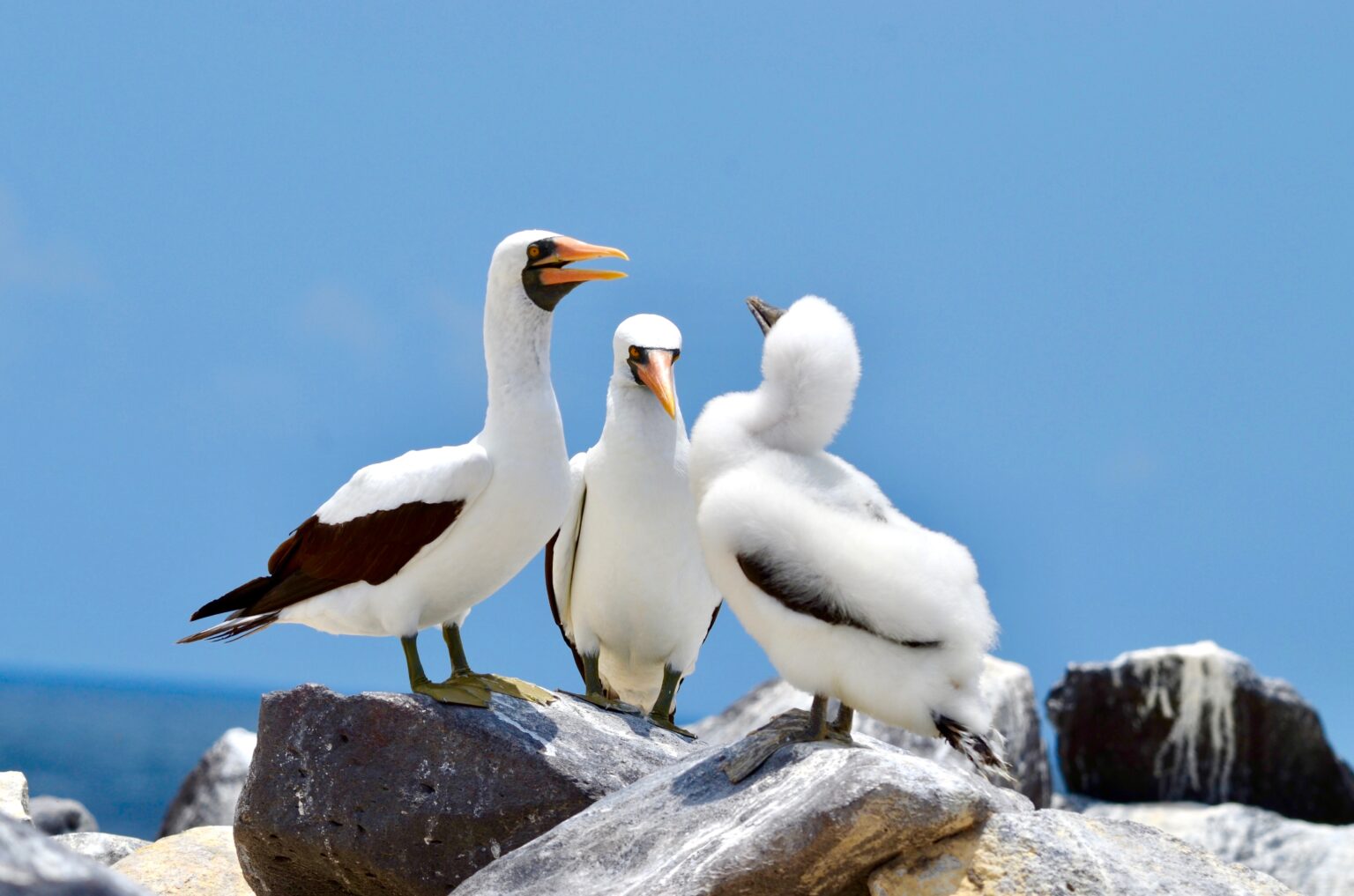
Galapagos Boobies Collection
Support our vital conservation work and celebrate three of the most iconic bird species in Galapagos: the blue-footed, red-footed and Nazca booby.
Read more about Nazca boobies...

